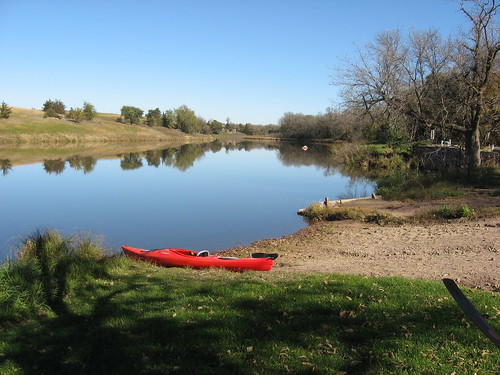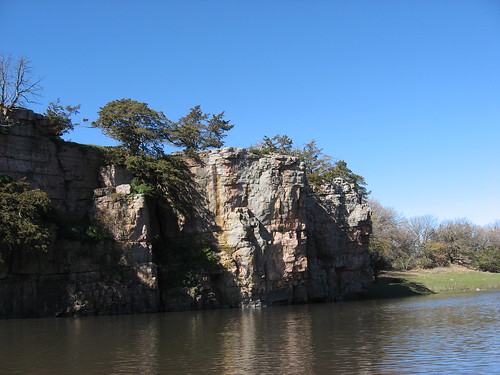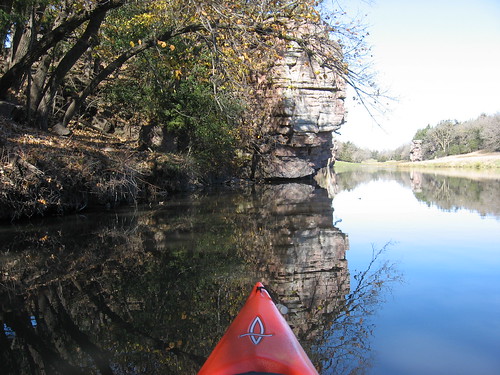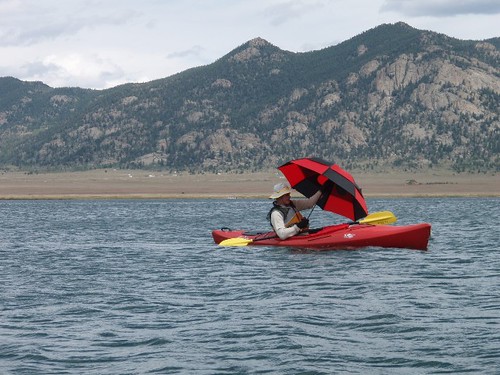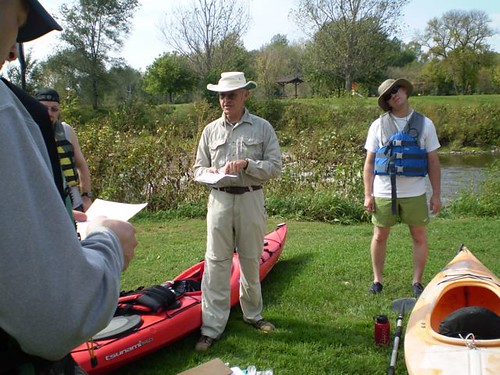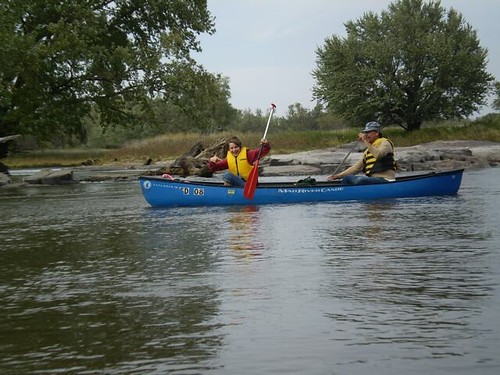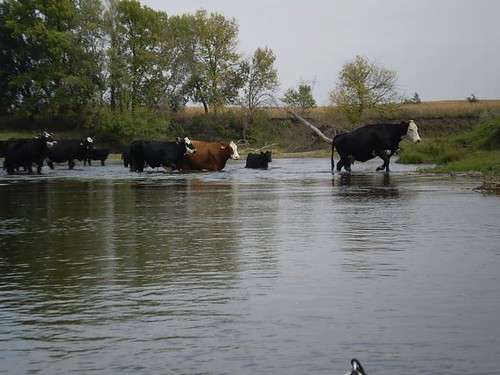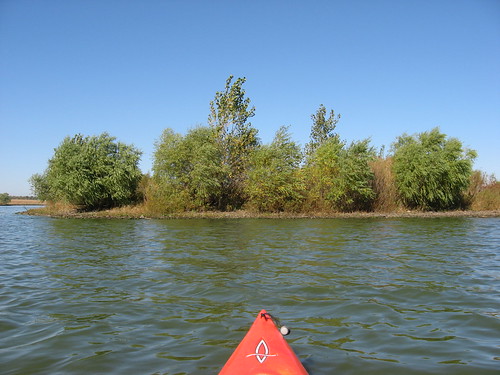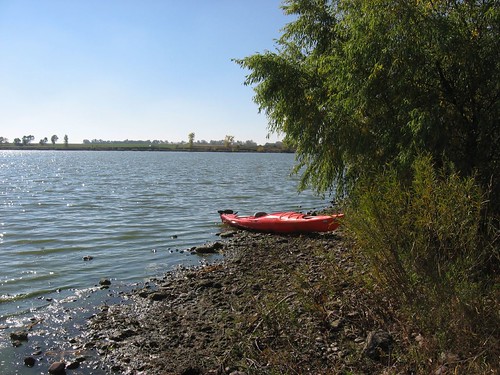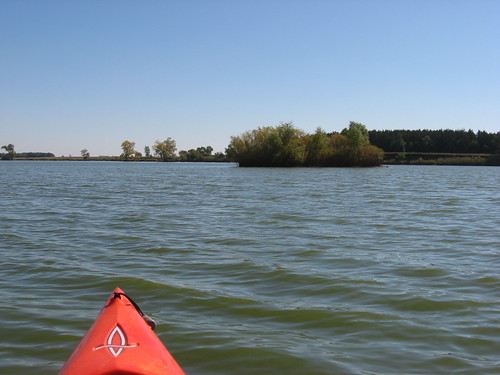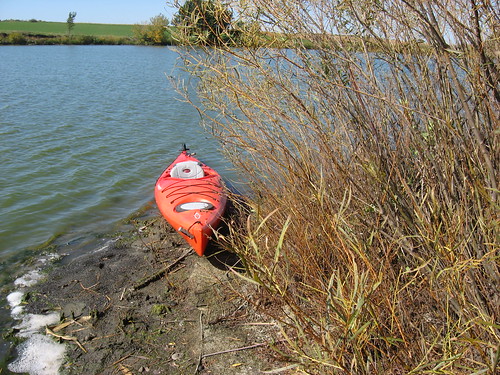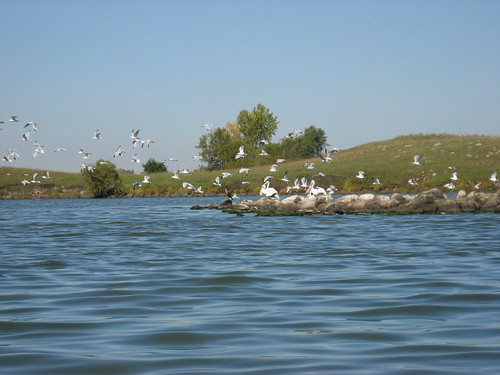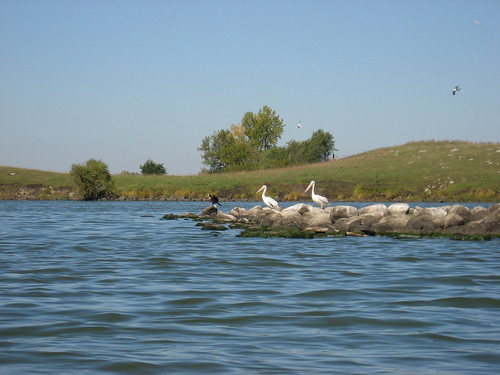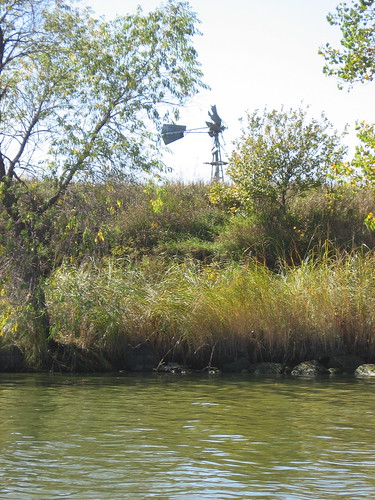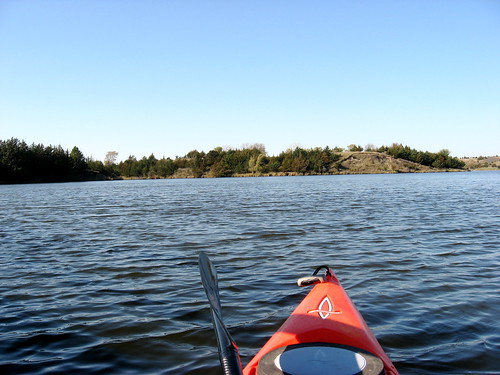
I decided to return to familiar waters. Lake Alvin is often the first and last paddle for me in the season. It is only about 10 miles from my eastside Sioux Falls home, and I can go from driveway to unloading the kayak in 15 minutes.

We had a killing frost this weekend, and I wanted to see the effect this descent into deep fall had on the vegetation along the lake. Most of the leaves are down from the deciduous trees, the grasses are all brown, the algae has largely disappeared from the lake surface, and there were very few birds to be heard or seen.
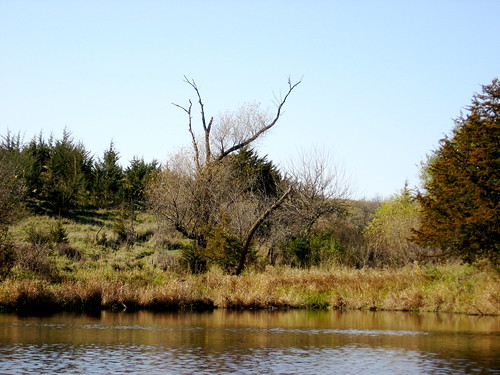
The lake was full. I was able to easily go up into the channel leading to the spillway and to kayak around the several bays that lead off the main body of the lake.
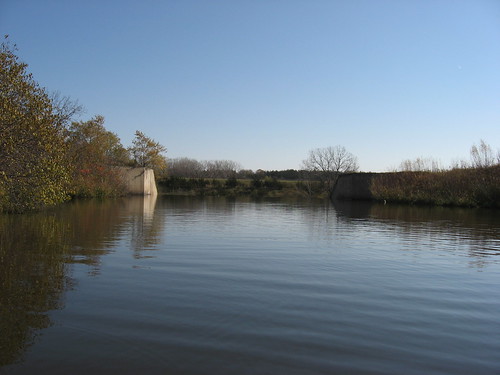
With a light wind, I was inspired to take my golf umbrella out with me and do a little umbrella sailing today. I sailed from the put-in on the north side of the western end of the lake nearly up to the northeastern end. My speed was about half of what I might have done paddling, but I just wanted to cruise along the shoreline with the umbrella slanting out into the wind. After 20 minutes or so of sailing, I got the paddle going and cruised the perimeter of the lake. After all, I thought, I did come out for some upper body exercise, and holding the umbrella out was just a novelty.


The lake was deserted, as usual on a weekday late morning. There were no boats on the water, and there was no one fishing. When I returned to the put-in, however, there was a pick-up there with three guys standing around drinking beer and enjoying the wonderful day.
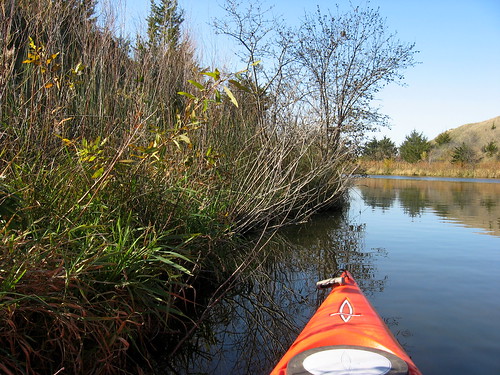
Once again, I was reminded that Lake Alvin is really a nice body of water for kayaking. I am drawn to explore other lakes, creeks, and rivers and sometimes don’t appreciate the attractiveness of this area: maybe it is just too close to home. I was a little reluctant to go out to some of my other haunts during pheasant hunting season. I don’t want to see a bunch of guys with red caps and vests totting shotguns when I am silently cruising by below the banks and the shoreline growth.

